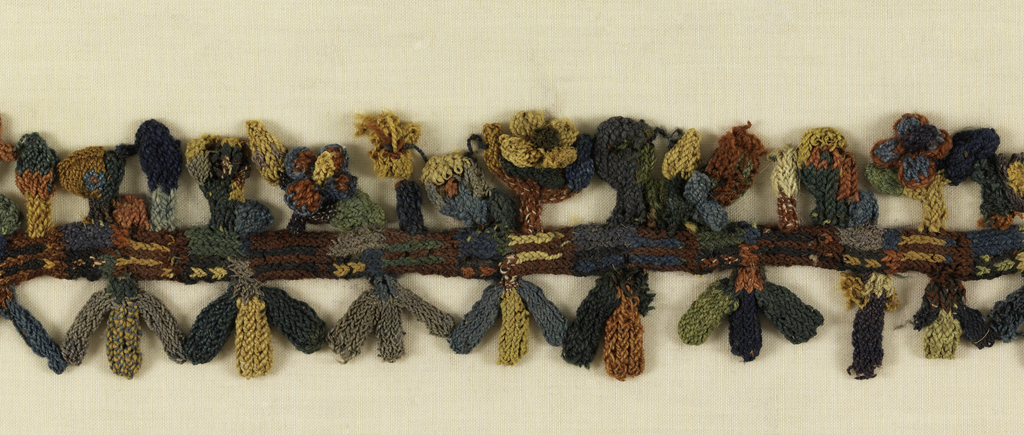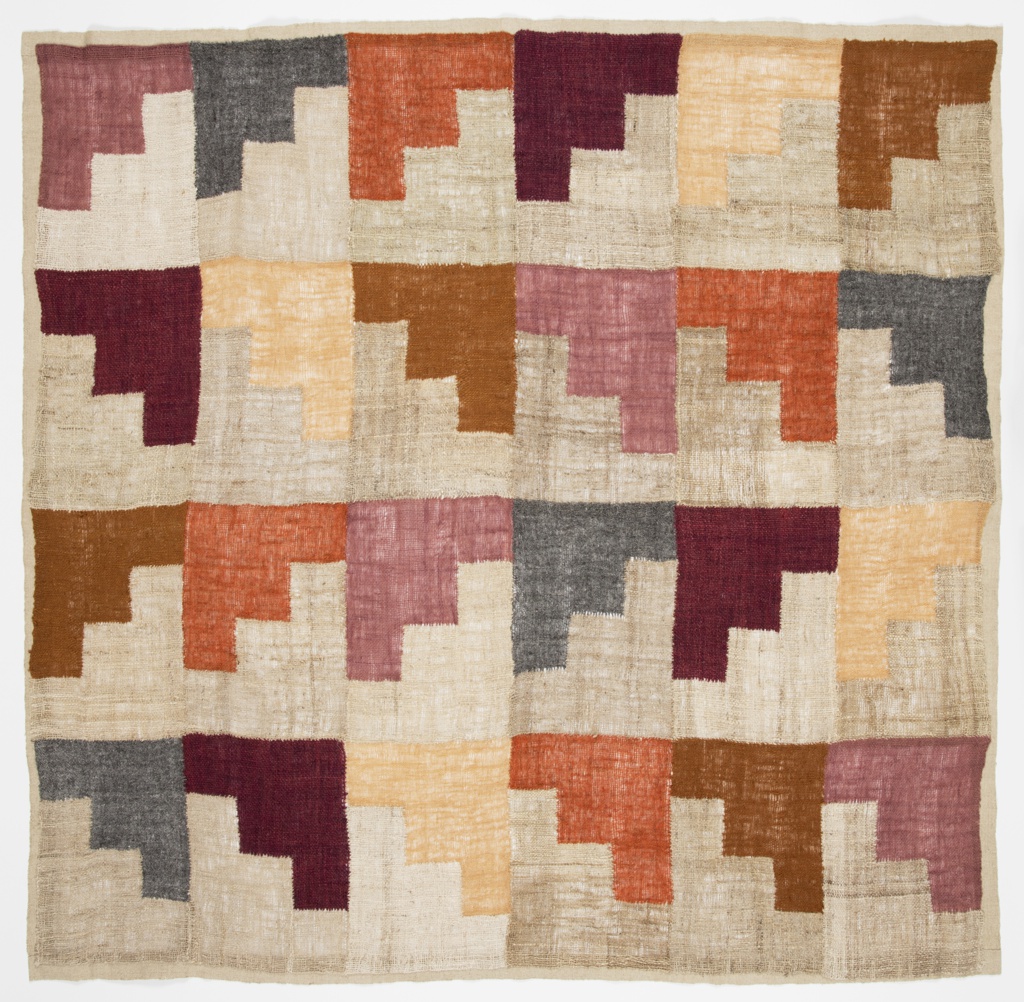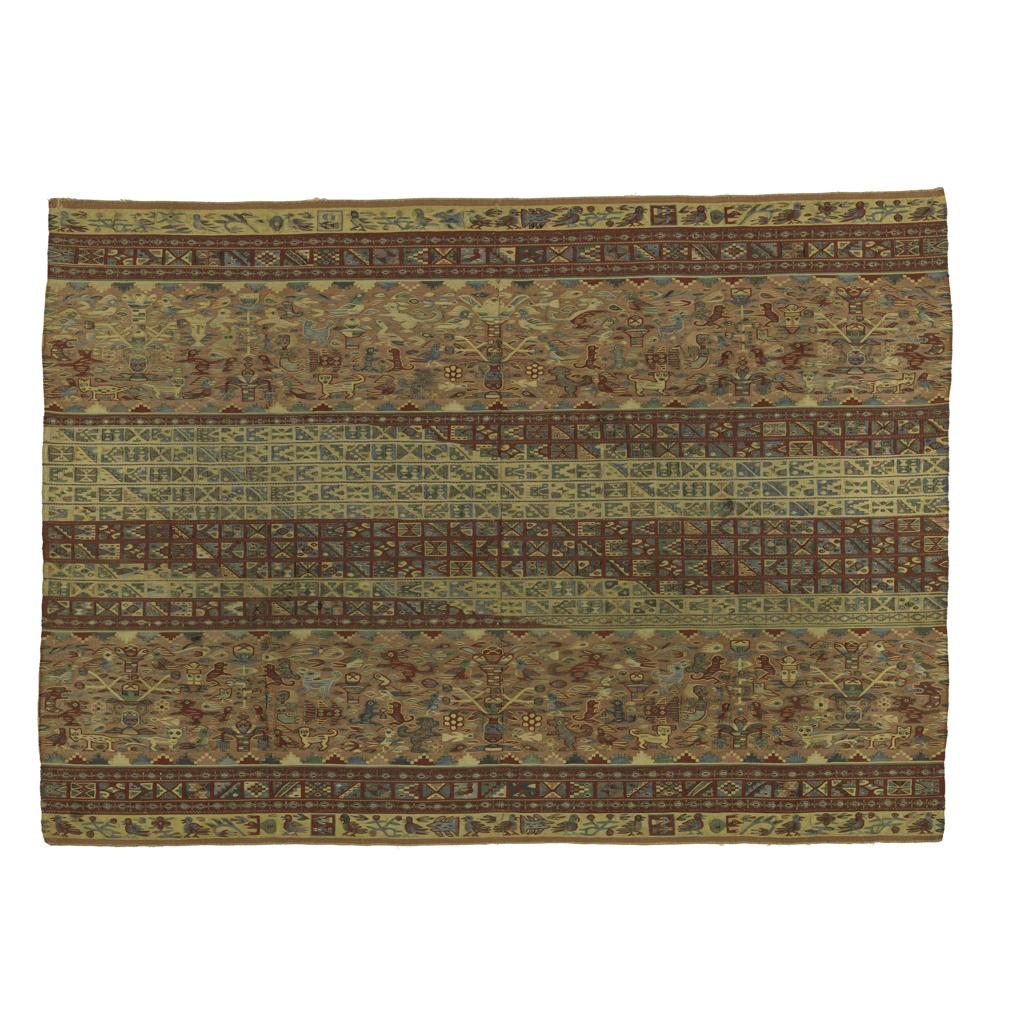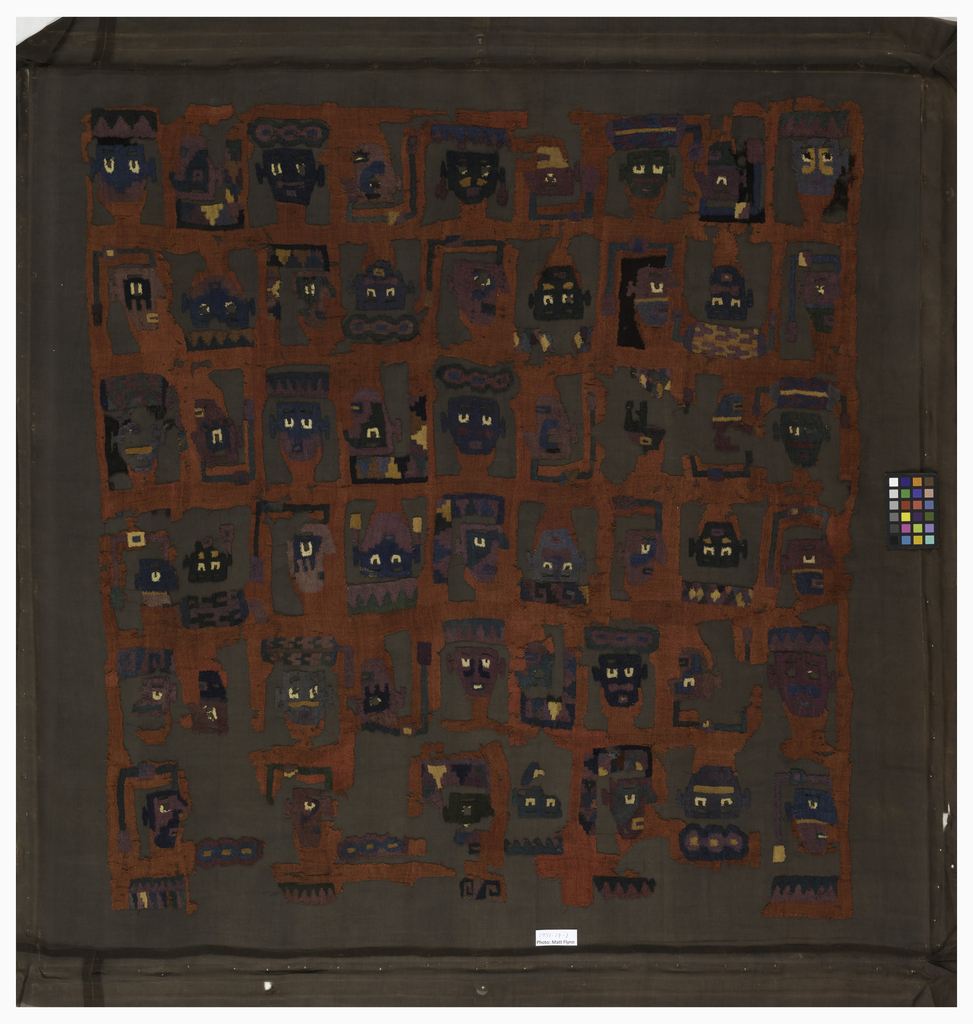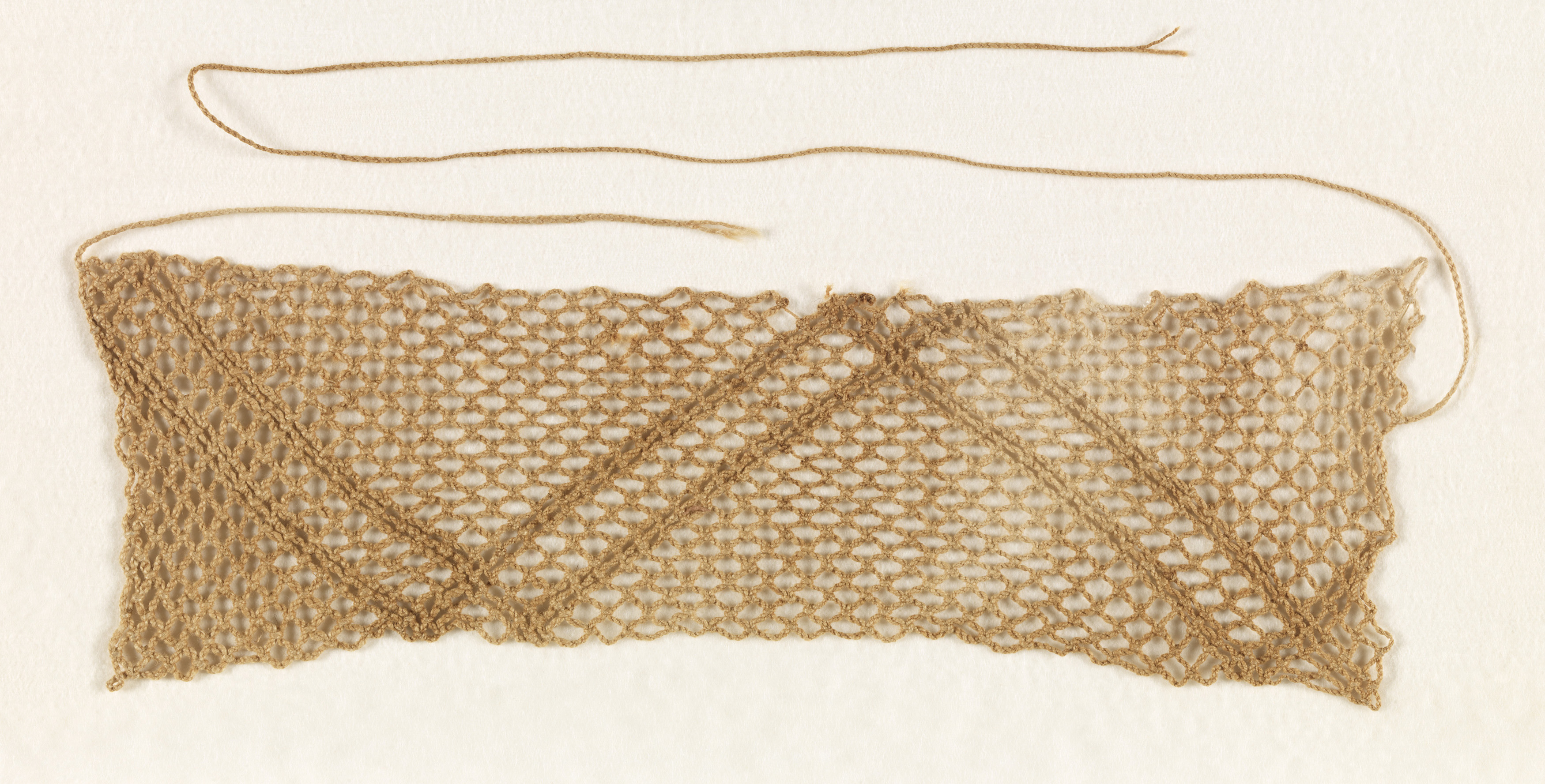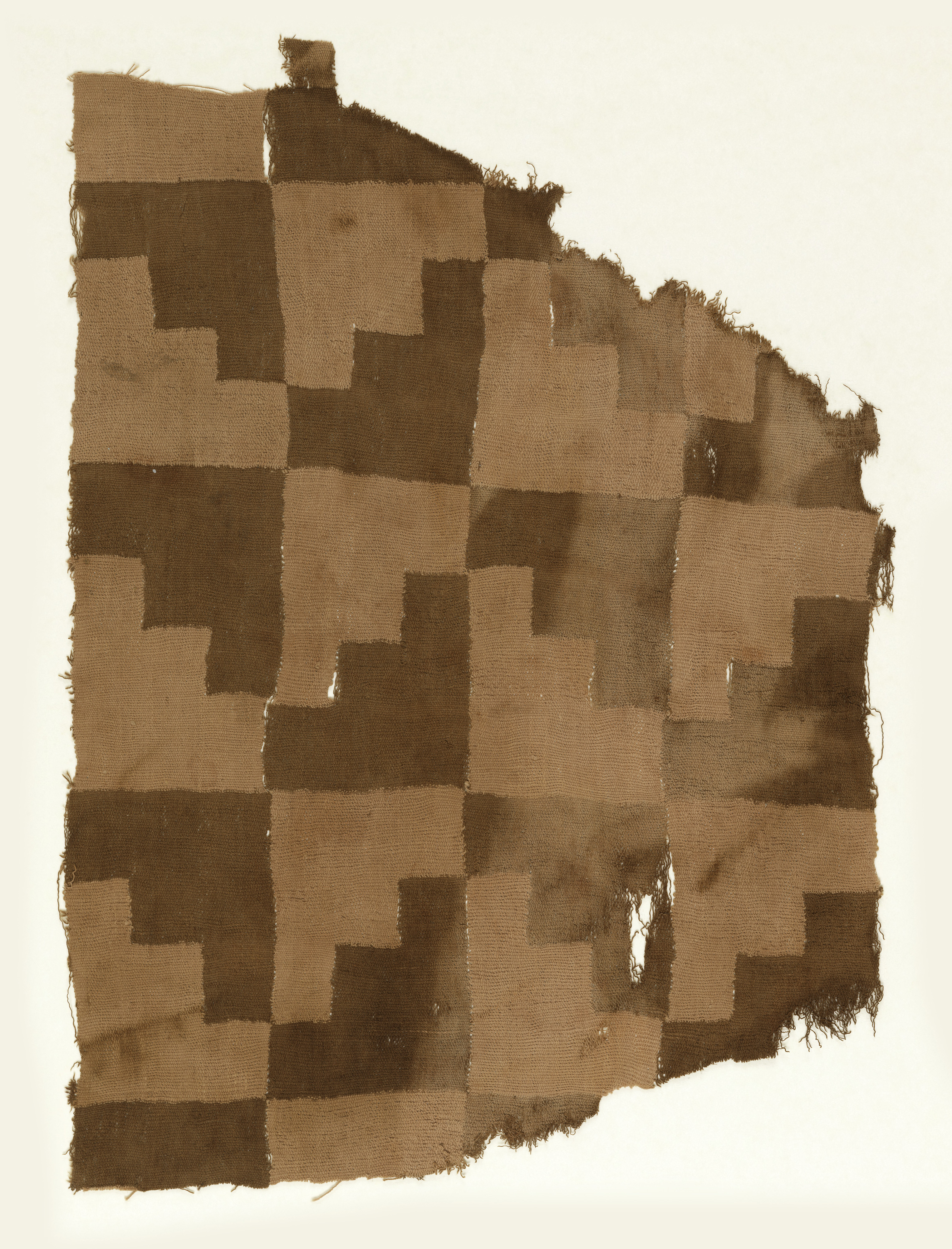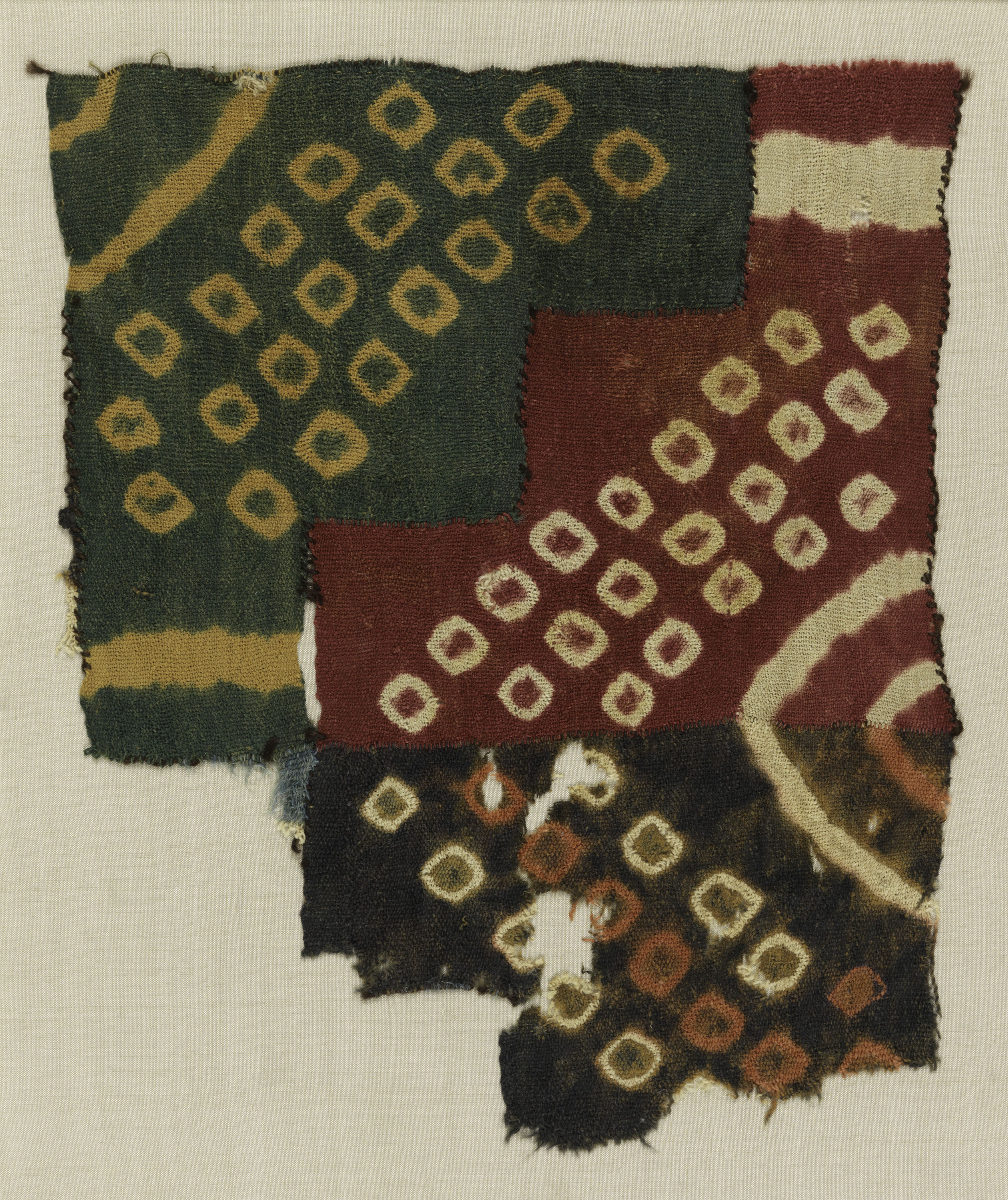During the period from around 100 B.C. to 400 A.D., Nasca needleworkers from the South Coast of Peru mastered the complex art of three-dimensional cross-looping. A number of colorful and complicated border fragments like this one have been preserved. The few garments that remain intact show that they were used as the outer edging attached...
Paired sets of stepped blocks in harmony and balance echo an ancient process. James Bassler (American, b. 1933), in his work Six by Four II, incorporates an aesthetic of pure color through the interlacing of warps and wefts in a special way. By changing the colors of each block, linked one to the other, thread...
In recognition of National Hispanic Heritage Month (September 15-October 15, 2019), this week’s Object Of The Day posts celebrate Latinx design and designers’ works in the collection. This rather ordinary looking band is actually extraordinary. Made in Mexico during the Spanish colonial period (likely mid-15th- early 16th c.) it is composed with a Spanish aesthetic,...
This post was originally published on December 20th, 2012. This beautiful cloth is a woman’s shoulder mantle, called a lliclla in the Quechua language of the Inca Empire, and was made during the colonial period of Peru. A perfect blend of the cross-cultural elements of the 16th- and 17th-century era of global trade, the Chinese...
The production of this type of cloth was confined to a brief period of great artistic achievement in the Nasca region. The portrait heads appear to be of human rather than deity figures, and seem to represent individuals of varied status and perhaps ethnicity, signaled by the wearing of certain accoutrements. Features of the figures...
The fine weaving of this narrow band, with eccentric wefts that follow the diagonals of the design, marks it as a special item. Among the brilliantly dyed blue, yellow and red yarns, a fuzzy, coffee-colored yarn stands out. The fiber source may be an extremely fine camelid, such as the wild guanaco, or rabbit hair,...
Knotted netting is one of the most ancient methods of constructing textiles, often used for functional objects essential to early cultures, such as bags, snares and nets. Many examples have been found in the middens, or refuse piles, of the Pre-ceramic cultures of the desert coast of Peru. Nets played an essential role in fishing:...
Andean cloth has many meanings. Some are expressed through complex iconographic representations, others employ a strictly geometric vocabulary. Another form of meaning comes from the materiality of the cloth itself and way it was made. This simple cloth is composed of interlocking stepped squares in contrasting colors. The duality of the design, like the Chinese...
The wild and syncopated play of color and pattern in this tie-dyed textile from ancient Peru seems to counter the meticulous and steadied hand of the Andean weaver. The fabric was in fact specially woven in discreet, stepped-shaped units that were cut apart and re-assembled after being tie-dyed, mixing up the variously dyed sections. Several...
